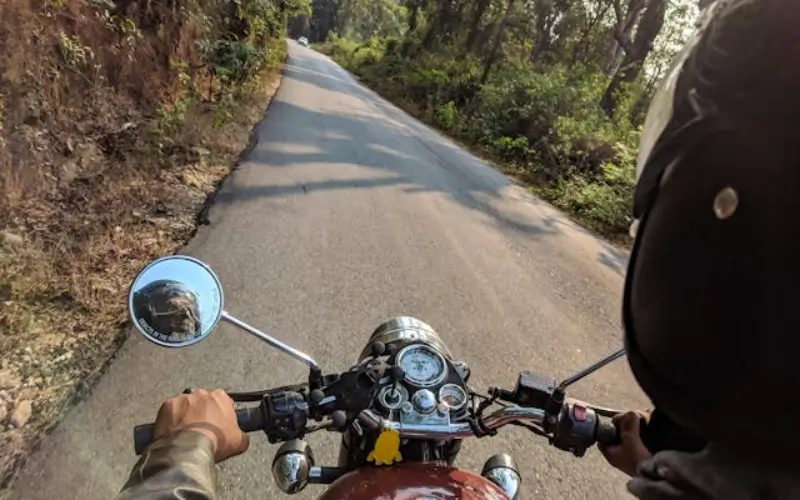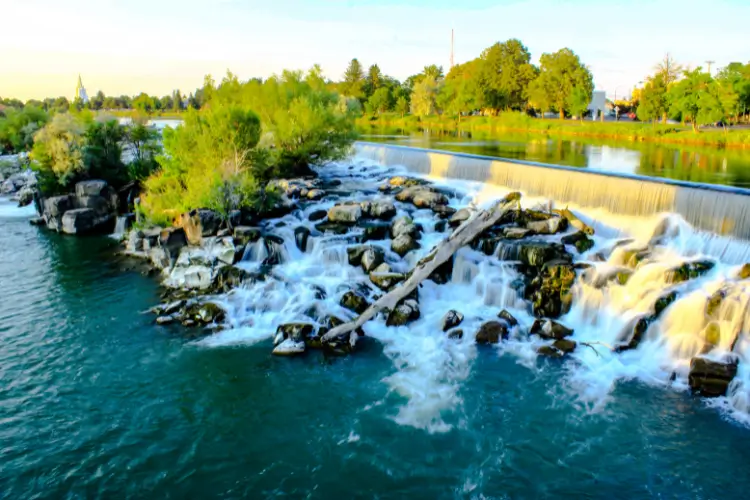A new motorcycle’s color shines in the morning light, and an enthusiastic rider feels the wind and the promise of freedom. But statistics say that new excitement demands careful safety practices to transform miles into memories instead of accidents. Luck isn’t as good at protecting bones, engines, and wallets as accurate information, constant practice, and polite patience. This is because two-wheel travel doesn’t have a crumple zone and doesn’t give much room for late repairs. The following advice puts established road lessons into simple terms that help newcomers stay calm, confident, and predictable in traffic that is heavier, quicker, and frequently distracted.
Pick Protective Gear That You Can Trust
The skull, jaw, and brain are shielded from pavement hits by a durable helmet with a safety label. A snug helmet keeps dirt, bugs, and drying wind out of your mind during crucial high-speed seconds. Weak joints are protected against sliding abrasions by armored jackets with shoulder, elbow, and spine plates. Short falls don’t stop thick gloves from manipulating throttle, stop, and signal controls. Hot exhaust pipes, broken glass, and severe weather may weaken skin and focus, but durable trousers with hip cushions and tall boots that cover shin guards form a continuous shell. Bright colors and sparkly stripes capture headlights at night, helping drivers notice people instead of fuzzy shapes. Trusted brands cost less than hospital deductibles, and examining seams, visors, and closures prepares every bike to battle.
How to Maintain Control, Calm, and Steady
Balancing in an empty parking lot helps you to release the clutch easily, roll on the throttle, and steady the forks without shifting weight forward. Figure-eights between painted lines let your eyes learn to see through turns, your upper body remains calm, and your lower body steer with mild knee pressure instead of abrupt handlebar pulls. Different speeds in repeated emergency stop exercises train muscles to rapidly and uniformly press the brakes until the tires almost sing, which shortens the stopping distance while keeping the wheels straight. Before leaning into a corner, select the right gear, speed, and lane position. This will help you avoid surprises in the middle of the curve, since motorbikes can’t swerve suddenly and stop forcefully at the same time. Riders who consistently grasp these calm basics are ready to make the right moves when traffic suddenly becomes dangerous instinctively.
Stay Bright and Easy to See Always
Daytime running lights and additional LED strips on the front make the vehicle seem taller, so drivers can know how far away it is instead of thinking one headlight is far away. A lane position that places the motorcyclist outside mirror blind regions while maintaining safe buffer zones improves side glass visibility and awareness. Vehicles behind them may monitor their speed and avoid tailgating by using reflective tape on their wheels and helmets. Correct hand gestures before changing lanes catch attention faster than flashing lights. When approaching an intersection with waiting vehicles, weaving the handlebars moves the headlights, breaking up the backdrop, and preventing inexperienced riders from making left turns, the most common two-vehicle collision.
Read Traffic and Road Surfaces Early
Scanning twelve seconds ahead displays stop lights, merging trucks, and potholes in time to make a smooth adjustment instead of swerving late, as gravel, oil drips, and painted crosswalks may ruin tires. Rain makes things more dangerous, but if you keep your throttle constant, sit up straight, and increase your following distance, grooved tires may safely channel water when careful riders don’t make sudden movements. When crossing railroad lines, bridge expansion joints, or fallen leaves, you need to keep your arms relaxed and roll on light throttle to avoid slipping. You need to cover your brakes and slow down as you drive through wildlife zones around dawn and twilight because a deer may jump out of nowhere and hit you before your headlights reach your shoulders. Think about every parked vehicle door and every person on the phone as a possible threat and prepare two ways to get away so that you don’t have to decide in a hurry.
Stay Ready for Mind and Machine
Resting brains can comprehend peripheral information and balance motorbike dynamics better than tired, hungry, or emotionally disturbed ones. Sleep, hydration, and quiet breathing should be on every pre-ride checklist. Alcohol and certain cold drugs slow down reflexes enough to obliterate hard-earned control abilities. Responsible riders avoid them till nighttime engine cooling. The brake lights, the tightness of the chain, the tire pressure, and the fluid levels are checked daily by walk-arounds. Breakdowns do not affect motorcycles or people walking on the road. Scheduled maintenance is recorded in a simple logbook. It guarantees that the warranty and resale values are high, and that the throttle cables and suspension bearings, and the fuel filter are in good condition. Everything will be fine as long as the motorcycle is working, and your mental state is clear.
Transform Yourself and Your Actions to the Moment
In hot weather, make sure you wear vented jackets and moisture-wicking layers so that you are not bothered by sweat. Shells that block the wind, warming grips, and fuel breaks enhance muscular reaction on cold mornings. Put off unnecessary excursions in thick fog or heavy rain since visibility declines for everyone, and response time decreases. Group rides need strict spacing, staggered lanes, and a review of hand signals ahead of time, since social pressure might make novices go faster than they are comfortable with. Updated weather apps, extra fuses, and portable tire pumps that make delays less likely while you’re far from assistance are all things that solo tours need. If a crash does occur due to weather conditions or road hazards, especially in busy areas like Los Angeles or other high-traffic cities, a California motorcycle accident lawyer can help investigate liability, deal with insurance companies, and pursue the compensation you deserve for medical costs, bike repairs, or missed work
Have the Proper equipment and Information at Hand during Each Ride.
Light packing is not as important as smart packing. Write up emergency contacts, leave the license, registration, and insurance data, and carry the papers around in a waterproof bag. Having a pocket toolkit, a tire repair kit, a flashlight, and a phone charger, a breakdown can become a matter of concern instead of a crisis. Always carry with you a kind of first-aid bag in your pocket, especially be cautious when you ride alone or in places where it isn’t easy to find people to help. Other maps, an energy bar, and an extra key zippered below the seat may come in handy in case something fails to work according to the program. Proper planning does not mean overpacking but finding peace of mind miles away.
Conclusion
Bright gear, trained control, cautious observation, mechanical maintenance, and flexible judgment are always needed for safe riding. New riders who follow these seven guidelines will enjoy pleasant commutes, interesting weekend adventures, and lifelong memories without hospitalization. Being patient during early parking-lot drills, getting durable gear, and being attentive to traffic changes to protect riders and the area. Practice makes every mile click into quiet confidence that manifests in flawless corner exits and respectful signals. Over months and years, confidence becomes a trained insight that makes wind treatment fun and road dangers manageable. With time, solid skills, and polite driving, convert a fun pastime into a reliable, cheap, and uplifting method to see every open mile.




